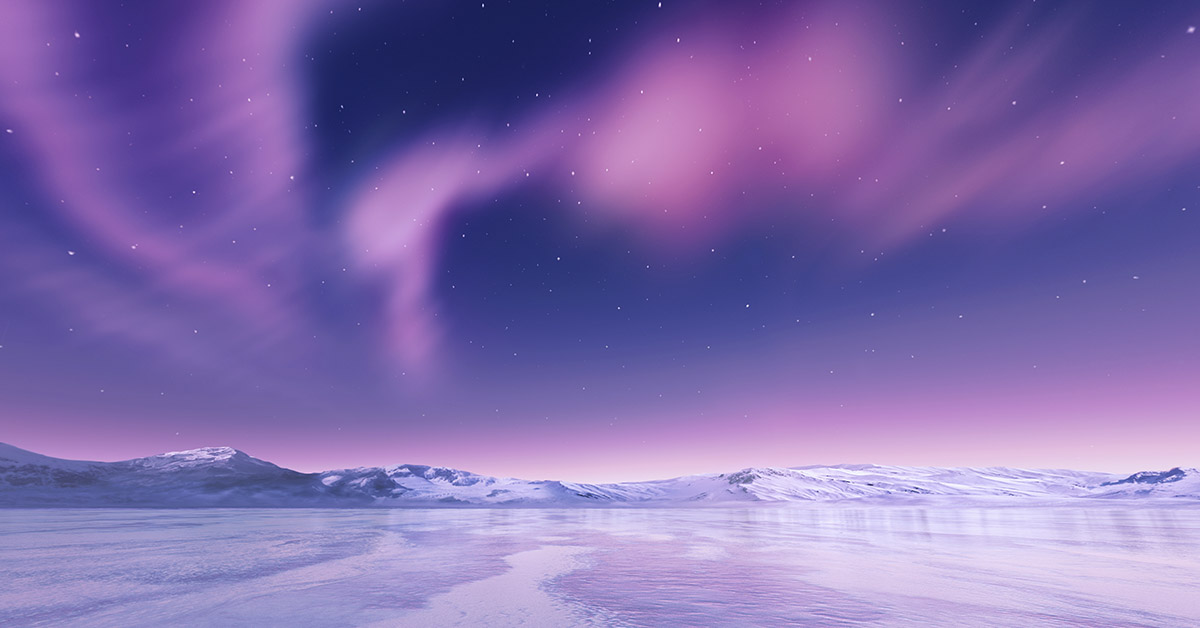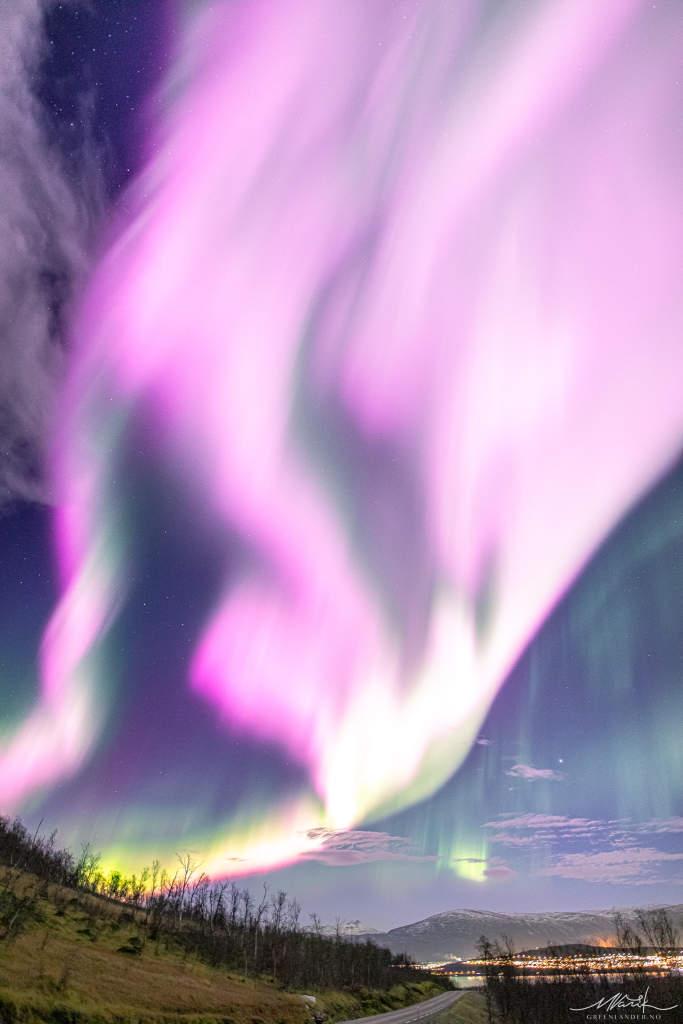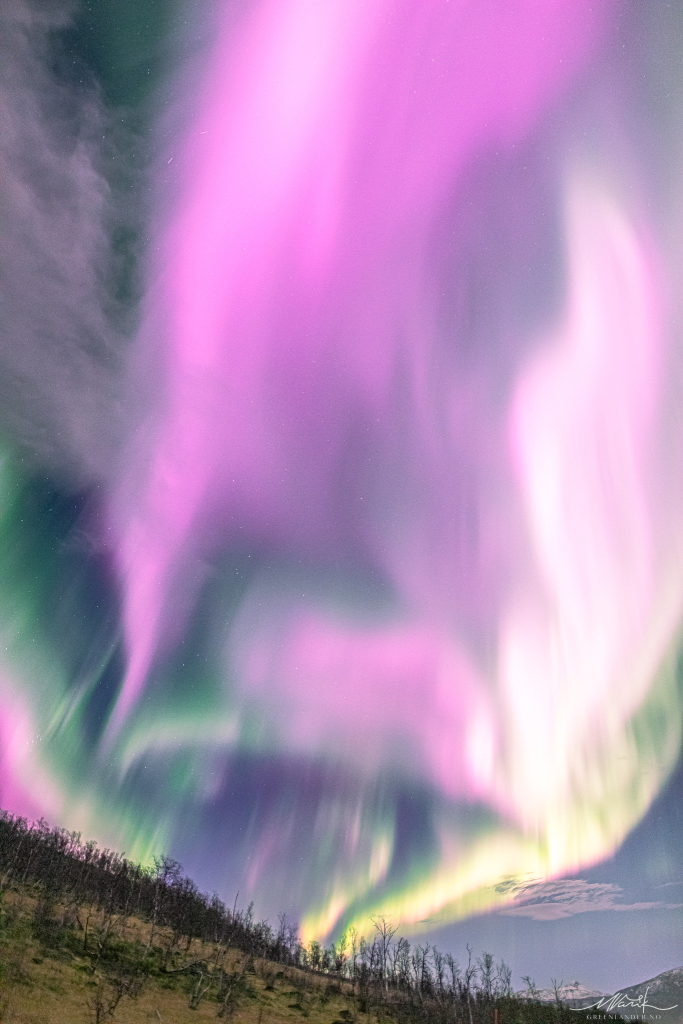The Aurora Borealis is always an impressive site to see. This past week, however, it was a particularly unique phenomenon. This is because there was a solar storm strong enough to create a hole in the Earth’s magnetic field which created some incredibly rare pink auroras, as opposed to their usual green glow. Check out these incredible photos!
A Hole In The Earth’s Magnetic Field Creates Unusual Pink Auroras
The Aurora Borealis is one of those bucket list items for many people. For people who live in places where they are seen often, they are, well, a pretty normal occurrence. This is the case for Markus Varik, a northern lights tour guide for Greenlander tours. On November 3, however, even he was awe-struck at what he saw in the sky over Tromsø, Norway. Instead of its usual green glory, the aurora borealis was glowing a rare and beautiful pink. The reason is a hole that opened up in the Earth’s magnetic field thanks to a particularly strong solar storm. (1)
How Do Auroras Form?
To understand why the Northern Lights glowed pink instead of green, we first need to understand why they glow at all. The Northern Lights, also known as auroras, occur when the Sun thrusts powerful solar winds at the Earth. These winds are made up of highly energetic charged particles. When those winds come in contact with our planet at such high speeds, they create holes in the Earth’s magnetic field.
This allows a space for these super-charged particles to come in through that hole. They then create a geomagnetic storm, which to us down on Earth just looks like beautifully colored lights up in the night’s sky, aka auroras.
Read: Planet Killer Asteroid Has Just Been Found Hidden In The Sun’s Glare
Usually, the Northern Lights are green with the occasional bits of purple or red. This is because most solar winds only reach about 100km to 240km in altitude (60-150 miles). Here, there is a higher concentration of oxygen. It’s these oxygen particles that give them their green color. This particular solar storm, however, was much more powerful than usual.
Scientists called it a G1-class magnetic storm. It cracked open a hole in the Earth’s magnetic field that stayed open for a whole six hours. It also flung those magnetic particles with such force that they reached much lower than they usually do. At lower altitudes, there is a much higher concentration of nitrogen in the atmosphere. It was this contact with a higher concentration of nitrogen particles that made this aurora turn pink.
Holes In The Magnetic Field Are Normal
If you’re sitting here worried about a hole in the Earth’s magnetic field might mean for us, don’t sweat it – these are actually quite normal and regular occurrences. The magnetic field is there to protect us from solar storms. When a hole is created, it usually closes pretty quickly. Scientists have found that they can stay open, however, for up to 14 hours.
The storms are classified on a G scale from one to five, so G1 is still a pretty mild storm overall. That being said, power grid fluctuations can occur, as well as small impacts on satellites and migratory animals. Lastly, of course, these beautiful auroras that the Northern parts of our world enjoy are also a side effect.
Currently, the sun is preparing for its most active period in the solar cycle. This will be coming in July of 2025. Currently, the sun has already been more active than usual. For those planning trips to go see the Northern Lights, this is a good thing.
It means that it is getting easier and easier, and more and more likely, that you will have the opportunity to see the Northern Lights on your trip. If you have not planned a trip to go see them, anytime within the next three years, your chances will only get better and better. Think places like Northern Canada, Iceland, Greenland, Sweden, Finland, Russia, Alaska, and Norway – these are all places where you should be able to see the Northern Lights. (2)
Read: ‘Space hurricane’ that rained electrons observed for the first time
Sources
- “Hole in Earth’s Magnetic Field Cracks Open For Six Hours Sparking Rare Pink Auroras.” IFL Science. Katy Evans. November 8, 2022.
- “When and Where to see the Northen Lights.” Discover



